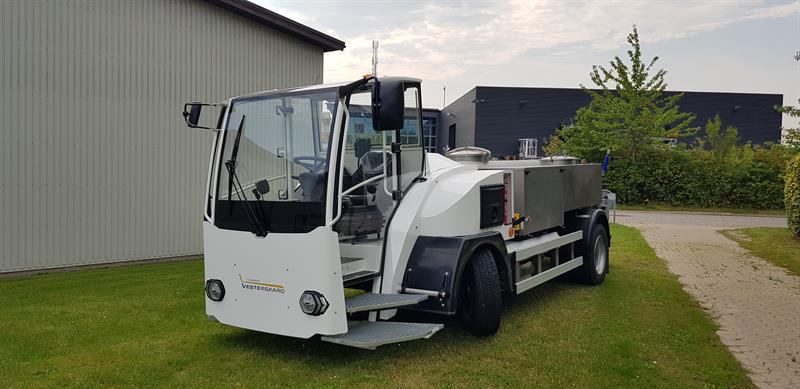
On a full charge, the new plug-in hybrid de-icer will be able to de-ice 15-20 aircraft without running the truck’s chassis engine. Meanwhile, the fully electric 12-tonne chassis, suitable for a number of GSE applications, such as water and lavatory, is equipped with a 40 kWh lithium-ion battery, and is capable of operating for 12 hours, covering up to 50 kilometres.
“The push has been on for a long time at environmentally conscious airports,” said CEO Stefan Vestergaard. “We took on the challenge at Vestergaard to explore possibilities to reduce emissions in de-icing and we believe that we have at the same time found significant economical savings for our customers using this new technology”.
The Elephant BETA is equipped with an OEM lithium-ion battery, which charges either via an on-board charger or via a generator on the PTO of the chassis diesel engine. Operators can drive to gate areas using the truck’s diesel engine, turn off the engine and perform the de-icing operation with the electric motors powering the spraying mechanism and low-speed maneouvering around the aircraft.
The operator can even drive short distances between gates using the electric motor. Without the diesel engine, particle pollution and noise levels are drastically reduced at gate areas.
De-icing fluid is heated with diesel in the current version; however, as soon as the desired temperature is reached, the heater turns off, and temperature drop is around 1˚C per hour. In future versions, larger battery capacity will enable heating without diesel.

As for the fully electric chassis, the unit can be equipped with an enclosed cabin or with an open-configuration. It comes with an on-board charger, which can charge the battery fully in 4-9 hours, and fast-charging to 80% capacity in 60 minutes is also possible.
With an electric chassis, operators can now operate equipment in closed gate areas with zero emissions and pollution, while noise is also dramatically reduced.
“Introducing a fully electric chassis is part of our overall CSR-strategy and our goal of carbon-free ramp handling by 2030,” commented Stefan Vestergaard, CEO of Vestergaard Company.
The new electric chassis will go into full operational testing in five airports over the coming winter.




